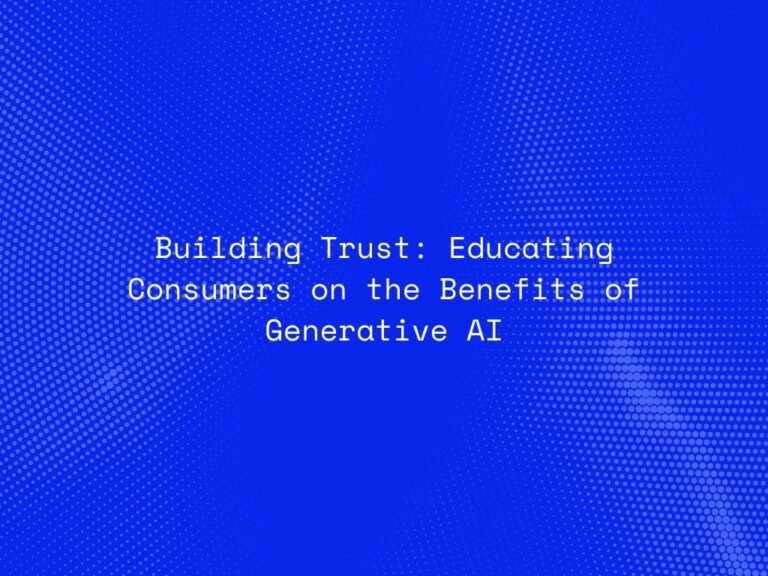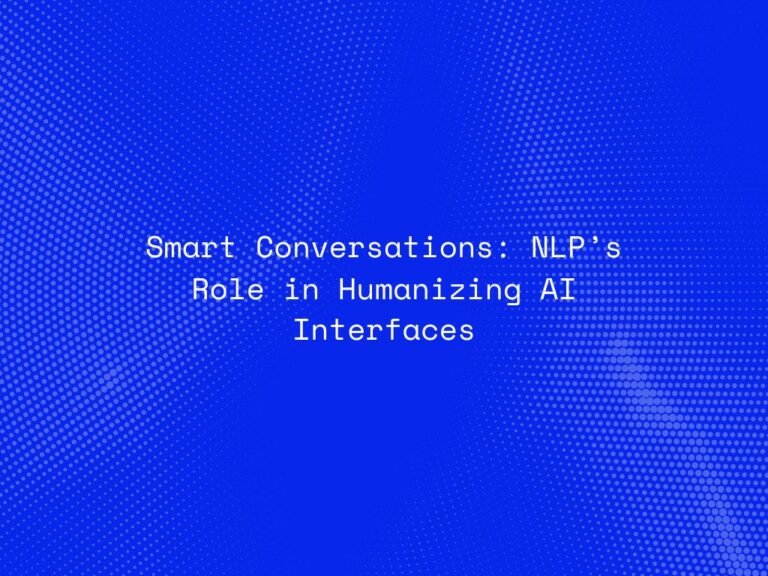As we venture further into the digital age, the influence of Artificial Intelligence (AI) and Machine Learning (ML) continues to expand across industries, shaping the future of technology, business, and society at large. These technologies are evolving rapidly, with new breakthroughs and applications emerging regularly. In 2024 and beyond, several key trends are poised to redefine how we interact with AI and ML, bringing innovative solutions to the forefront and creating new opportunities and challenges. This blog explores the most significant AI and ML trends to watch, offering insights into what’s next for these transformative technologies.
1. Generative AI Goes Mainstream
Generative AI, which involves using AI to create new content such as text, images, music, and even video, is expected to become more mainstream in 2024. Tools like OpenAI’s GPT-4 and Meta’s LLaMA have already showcased the potential of generative models, and the next wave of developments will likely focus on:
Content Creation at Scale: Businesses will increasingly use generative AI to produce marketing content, product designs, and even entire virtual environments. This will allow companies to scale their creative processes while maintaining a high level of personalization.
Generative AI in Art and Media: The art and entertainment industries will see more AI-generated content, from music and films to video games and digital art. This trend will blur the lines between human and AI creativity, raising questions about authorship and originality.
Ethical and Responsible AI: As generative AI becomes more prevalent, there will be a greater emphasis on ethical considerations, including issues of bias, intellectual property, and the potential misuse of AI-generated content.
2. AI-Powered Automation Takes Center Stage
Automation powered by AI and ML is set to revolutionize industries by streamlining operations, reducing costs, and enhancing productivity. Key areas where AI-powered automation will make significant strides include:
Hyperautomation: Combining AI, ML, and robotic process automation (RPA) to automate complex business processes end-to-end. Hyperautomation will enable organizations to rapidly scale their operations and improve efficiency across all departments.
AI in Supply Chain Management: AI-driven automation will optimize supply chains by predicting demand, managing inventory, and coordinating logistics in real-time. This will help businesses respond more agilely to market changes and disruptions.
Customer Service Automation: AI-powered chatbots and virtual assistants will continue to improve, offering more personalized and efficient customer support. This will reduce the need for human intervention in routine tasks, allowing businesses to focus on more complex issues.
Connect With Us
3. The Rise of Explainable AI (XAI)
As AI systems become more complex, there is a growing need for transparency and explainability. Explainable AI (XAI) seeks to make AI models more understandable to humans, ensuring that decisions made by AI systems can be trusted and verified. In 2024 and beyond, we can expect:
Increased Adoption of XAI: Businesses and regulators will push for AI systems that provide clear, interpretable outputs, especially in high-stakes areas like healthcare, finance, and legal services. XAI will help mitigate risks associated with black-box models and foster greater trust in AI.
Regulatory Compliance: Governments and regulatory bodies will likely introduce new standards and guidelines for AI transparency, requiring companies to implement XAI in their systems to ensure accountability and fairness.
Ethical AI Frameworks: Organizations will develop and adopt ethical frameworks that prioritize transparency, fairness, and bias reduction in AI decision-making processes, aligning with the principles of XAI.
4. AI in Edge Computing
Edge computing, which involves processing data closer to the source rather than relying on centralized cloud servers, is gaining traction due to its ability to reduce latency and improve real-time decision-making. AI and ML will play a critical role in enhancing edge computing capabilities:
AI-Driven IoT: The integration of AI with Internet of Things (IoT) devices at the edge will enable smarter, faster responses to data, enhancing everything from smart home systems to industrial automation.
Autonomous Systems: AI at the edge will power autonomous vehicles, drones, and robots, allowing them to operate with greater independence and reliability in dynamic environments.
Energy Efficiency: AI will optimize edge computing resources, reducing energy consumption and costs by dynamically allocating processing power based on real-time needs.
5. AI for Climate Change and Sustainability
As the world grapples with the effects of climate change, AI and ML are emerging as critical tools in the fight for sustainability. In the coming years, we will see an increased focus on:
AI for Environmental Monitoring: AI will be used to analyze vast amounts of environmental data, from satellite imagery to sensor networks, enabling more accurate predictions of climate patterns and natural disasters.
Sustainable Agriculture: AI-driven solutions will optimize agricultural practices by predicting weather patterns, managing water resources, and improving crop yields. This will help address food security challenges in a changing climate.
Energy Optimization: AI will play a key role in managing renewable energy sources, optimizing power grids, and reducing carbon emissions. AI-driven insights will help industries become more energy-efficient and reduce their environmental impact.
Connect With Us
6. AI in Healthcare: Personalized Medicine and Beyond
AI’s role in healthcare is expanding, with a focus on personalized medicine, early diagnosis, and improved patient outcomes. The next wave of AI in healthcare will include:
Personalized Treatment Plans: AI will analyze genetic data, patient history, and lifestyle factors to create customized treatment plans tailored to individual patients. This approach will improve the effectiveness of treatments and reduce the risk of adverse reactions.
AI-Driven Diagnostics: AI will enhance diagnostic accuracy by analyzing medical images, lab results, and patient data. This will lead to earlier detection of diseases such as cancer, improving survival rates.
Telemedicine and Remote Monitoring: AI-powered telemedicine platforms will provide real-time patient monitoring and virtual consultations, making healthcare more accessible and efficient, particularly in remote or underserved areas.
7. Advancements in Natural Language Processing (NLP)
Natural Language Processing (NLP) has made significant strides in recent years, and 2024 will see further advancements that enhance human-computer interaction:
Conversational AI: NLP-driven conversational agents will become more sophisticated, enabling more natural and context-aware interactions. This will enhance customer support, virtual assistants, and AI-driven content generation.
Multilingual AI: As businesses operate in increasingly global markets, AI models that understand and generate content in multiple languages will become essential. NLP advancements will enable more accurate and culturally aware translations, improving communication across borders.
Sentiment and Emotion Analysis: AI systems will gain a deeper understanding of human emotions and sentiments, allowing for more empathetic and responsive interactions in customer service, mental health support, and social media monitoring.
Connect With Us
8. Ethical AI and AI Governance
As AI becomes more pervasive, the need for robust governance and ethical frameworks will grow. Key trends in this area include:
AI Governance Frameworks: Companies will increasingly adopt governance frameworks that define ethical standards for AI development and deployment. These frameworks will address issues such as bias, fairness, transparency, and accountability.
Regulation and Compliance: Governments around the world will introduce regulations to ensure that AI systems are developed and used responsibly. Compliance with these regulations will become a critical aspect of AI development.
AI Ethics Committees: Organizations will establish AI ethics committees to oversee the development and use of AI technologies, ensuring that they align with ethical principles and societal values.
Conclusion
As we look to 2024 and beyond, AI and ML are set to continue their rapid evolution, driving innovation across industries and transforming the way we live and work. From the mainstream adoption of generative AI to the rise of explainable AI and the integration of AI in edge computing, the trends outlined in this blog highlight the diverse and dynamic nature of AI’s future.
Businesses and organizations that stay ahead of these trends and invest in AI and ML technologies will be well-positioned to capitalize on the opportunities they present. However, it will be equally important to navigate the challenges and ethical considerations that come with these advancements, ensuring that AI is developed and deployed in a way that benefits society as a whole.
By understanding and embracing the trends in AI and ML, we can unlock new possibilities and create a future where technology enhances our lives in meaningful and sustainable ways.




